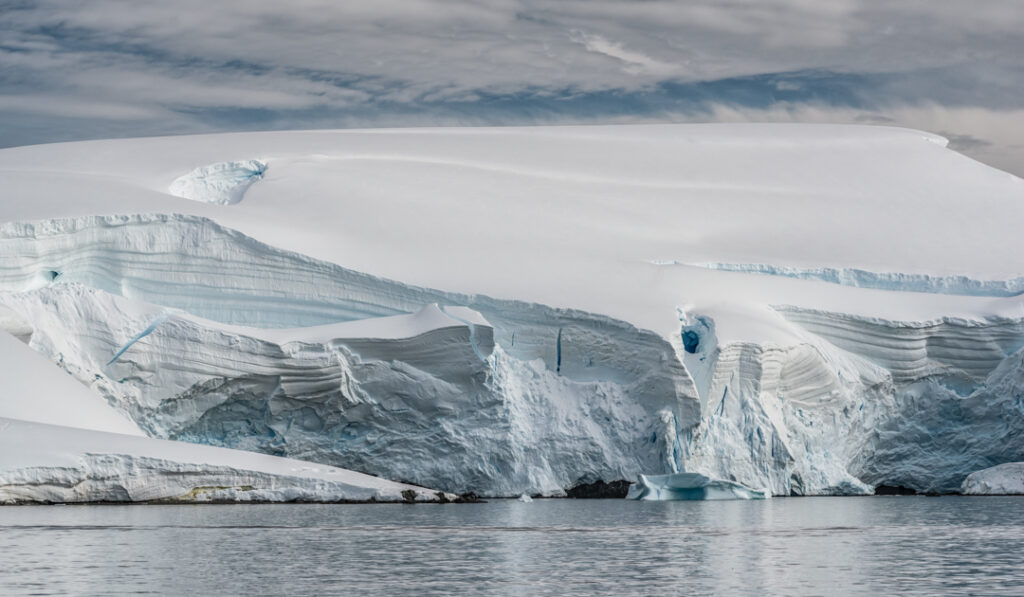
Antarctica’s melting glaciers are adding more freshwater to the Southern Ocean than projected. That is causing the mechanism that delivers oxygen-rich waters to the world’s oceans to break down faster than expected
Around Antarctica, the flow of very cold, very salty water (what scientists call “heavy” water) from the surface of the Southern Ocean to its depths drives currents around the continent. But recent research suggests that global warming has caused deep-sea currents in some parts of the Southern Ocean to slow by 30% since the 1990s. This, in turn, is causing less oxygen to reach the ocean’s depths, from where it is spread to the rest of the world’s oceans.
While a slowdown in deep-sea circulation was predicted, it was not expected to occur before 2050, and not to the extent the research indicates.
“But these latest observations suggest the projected slowdown is in fact already well underway,” Matthew England, the deputy director of the Australian Centre for Excellence in Antarctic Research and co-author of the paper published in Nature Climate Change, said in a news release.
The research identified freshwater from the melting of Antarctic glaciers into coastal waters as the direct cause of this slowdown. As more freshwater mixes with seawater, the coastal waters become less saline, and thus less dense. As a result, less of the oxygen-rich surface water is sinking to the depths. This mixture — known as Antarctic Bottom Water — is among the densest water found in the oceans. Carried on deep-sea currents from the Southern Ocean, it accounts for perhaps 40% of the total volume of ocean water.

The most recent projections for Antarctic deep-sea circulation — based on the UN climate panel’s most pessimistic outlook — indicate that the flow of the AABW could slow by more than 40% by 2050. Less circulation, according to Dr England, means fewer nutrients being transported from the deep ocean to organisms at the sea surface.
“We’re used to the idea that melting of the Antarctic Ice Sheet causes sea-level rise. But this work also shows us that the impacts of melting glaciers in Antarctica extend all the way to the deep sea, affecting climate and ocean chemistry, as well as sea level,” said co-author Stephen Rintoul, an oceanographer with CSIRO, Australia’s national science agency.
The research team compares the AABW to a lung that pumps oxygen — along with carbon and nutrients — into the deep ocean of the Atlantic, Pacific and Indian oceans. Contraction of the AABW layer has already been observed in each of the major oceans, suggesting that less deep water is being formed in other Antarctic regions as well, and thus less oxygen is being transported to the deep ocean, according to the study.

Reduced oxygen availability in the ocean results in habitat loss for marine organisms, both on the seafloor and in the water above. This could have implications for the reproduction and growth of oxygen-dependent species. Cascading effects on the food web may also affect fish populations that are important for human food security.
The research team expects the salinity of the water over the Antarctic continental shelf to continue to decline, possibly even faster than before. However, they recorded a slight increase in salinity between 2009 and 2018. According to Kathy Gunn, an oceanographer and the lead author of the paper, this has led to a partial recovery.
“It’s all to do with salinity. The salinification and recovery of the circulation shows that the mechanisms can work in both directions,” Dr Gunn said. “So, if freshening reduces, then some of the deep overturning circulation could be recovered.”
Julia Hager, PolarJournal
Source
Gunn, K.L., Rintoul, S.R., England, M.H. et al. Recent reduced abyssal overturning and ventilation in the Australian Antarctic Basin. Nat. Clim. Chang. (2023). https://doi.org/10.1038/s41558-023-01667-8
More about this topic





